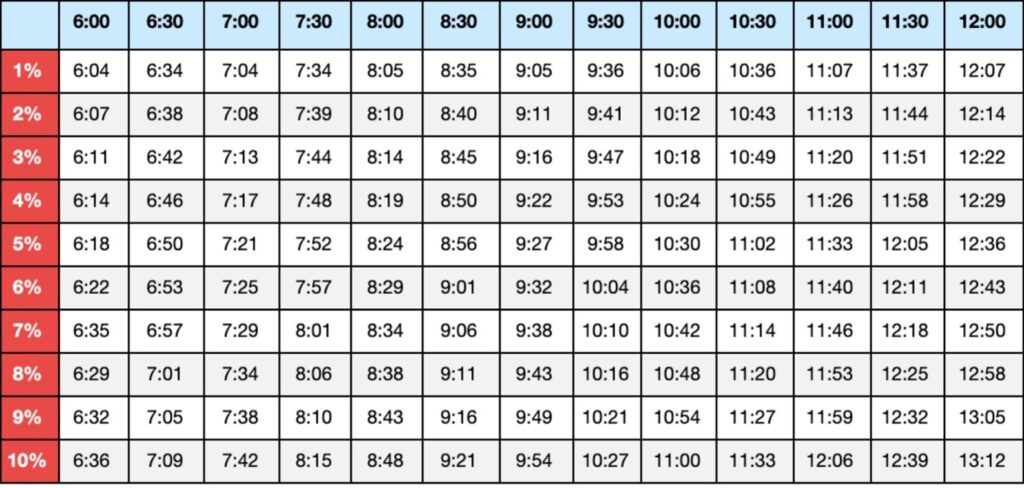Running in the heat and humidity
April 25, 2024
How to make smart adjustments when race day weather doesn’t cooperate.
This weekend is the Nashville Rock N’ Roll Marathon and it is going to be a warm one with highs in the mid 80’s! Under the right circumstances running in the heat can be an advantageous and push your training forward. But racing in the heat, especially if you aren’t yet acclimated, can negatively impact your performance.
How to make strategic adjustments for running in the heat
Did you know you can make a calculated adjustment to your pace based on the weather? The most common assessment of weather impact is a combination of two objective measures – heat and dew point (a temperature representation of humidity). The total value of these two numbers gives you a gauge on how much you should adjust your racing or training paces. For example, if the temperature is 80°F and the dew point is 40°, that total is 120. This number indicates a 1.0% pace adjustment, as you will see in the table below.
| HEAT + DEW POINT | PACE ADJUSTMENT |
| 100 or less | No adjustment required |
| 101 to 110 | 0 – 0.5 % pace adjustment |
| 111 to 120 | 0.5 – 1.0% pace adjustment |
| 121 to 130 | 1.0 – 2.0% pace adjustment |
| 131 to 140 | 2.0 – 3.0% pace adjustment |
| 141 to 150 | 3.0 0 4.5% pace adjustment |
| 151 to 160 | 4.5 – 6.0% pace adjustment |
| 161 to 170 | 6.0 – 8.0% pace adjustment |
| 171 to 180 | 8.0 – 10.0% pace adjustment |
| Above 180 | Strenuous running not recommended |

General Dos and Don’ts for Running on a Hot and Humid Race Day
Do:
Hydrate the weeks and days leading up to the event, not just during the run.
Wear light clothing.
Aim for 12-16 ounces of fluid/hour.
Recognize the signs of heat illness.
Don’t:
Stick to your winter running paces if you are not heat trained.
Skip water stations.
Ignore the signs of heat illness.
What are the signs of heat stress to watch for when running in the heat?
Smart racing means listening to your body, and recognizing the signs of heat stress. Be on the lookout for pallor, cramps, hyper-ventilation, nausea, headache, dizziness. You can still enjoy a hot race day if you adjust your expectations accordingly!
Leave a Reply Cancel reply
quick links
Schedule an Appointment
Meet the Team
Performance Services
Rehab Services
Patient Testimonials
FAQ
Free phone consultation.
GET STARTED